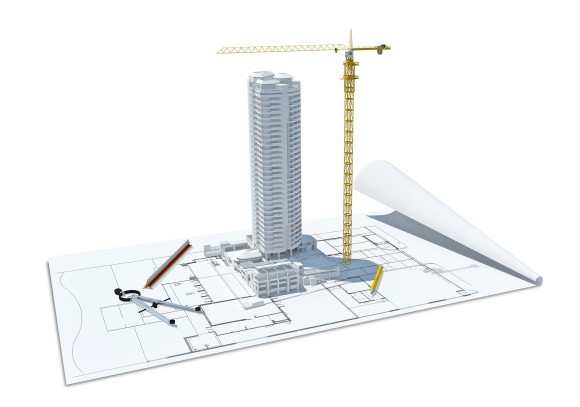Architects and engineers are high-risk professions. A small error within their designs can potentially lead to construction delays, significant losses and an array of other costly lawsuits. Purchasing professional liability insurance specific to the industry can protect architectural firms from these claims, but as an insurance agent or broker, it’s important to understand the intricacies associated with this type of professional liability insurance.
Here are three trends you need to know about insurance for your architect and engineer clients.
Modular Building Coverage
Modular building or prefab might just be the future of the construction industry. Modular building can be a less expensive, faster and more efficient option than on-site construction. However, it can also pose problems that might otherwise have been avoided if using the traditional building method. Inexperience with modular building is most likely the main reason for some problems. Some product suppliers will not maintain warranties for off-site preassembly. Alignment problems can arise during installation of the modules in the field. If an error is made during assembly of multiple units, this error could be multiplied many times by the number of units being constructed. Transportation of the modular units from factory to job site can cause problems, as well. Understanding the difference between building permits for modular and building permits for on-site construction is important.
Energy and Mining
The energy and mining industry is expected to grow much faster than GDP based on the continued development of natural gas production and renewable energy. The Bureau of Labor statistics expects energy consulting to be one of the fastest growing industries over the next decade. Annual revenue for a five year period is expected to grow 73 percent during 2012 to 2017, as compared to the previous five years. Along with this rapid growth will come the expected hazards, errors and insurance litigation. Areas of concern outside of the already well-publicized fracking are design and construction of oil/gas well sites, installation of wind turbines, photovoltaic system design and engineering, and safety consulting related to all areas in energy. In addition to the obvious three concerns over property damage, bodily injury, and pollution, errors causing financial loss must be contemplated due to the vast amounts of natural resources at stake and their inherent value.
Real Estate Development
The future of real estate development in the United States looks bright, but fast-evolving trends could pose problems for developers and investors alike. Prospects for profitability continue to improve due to increasing interest rates, demographic shifts, a recovery in the housing market, and the effects that GenY are having on the country. The continued Asian investments in U.S. real estate has helped the market for domestic development remain strong. Of particular interest to investors are urban office centers, which have low vacancy and increasing rents. However, cities contribute an estimated 70 percent of the world’s energy-related greenhouse gases, according to UN-HABITAT’s Global Report on Human Settlements. Thus, pressures to make these urban buildings more energy efficient will increase. Sustainability ratings, which are currently not mandatory, could become the norm, potentially leading to a boom in construction of “green” buildings.
These developments raise new risks for the industry. The push for green buildings means that developers who install outdated, energy inefficient systems could face scrutiny from investors for reduced valuations on their investments. Architects who don’t coordinate early with local governments on zoning and other regulations could be liable for the costs associated with construction delays. And let’s not forget the most important consideration in real estate – location, location, location – developers who choose to build outside the growing urban areas could potentially be sued by investors for lack of due diligence in site selection.
Coverage for architects and engineers is a growing class and the industry can help these professionals by keeping on top of new trends and providing specialized coverage for new and evolving exposures.
Topics Trends Numbers Construction
Was this article valuable?
Here are more articles you may enjoy.



 New York Governor Hochul Vows to Tackle Insurance Affordability, Litigation and Fraud
New York Governor Hochul Vows to Tackle Insurance Affordability, Litigation and Fraud  Florida Lawmakers Ready for Another Shot at Litigation Funding Limits
Florida Lawmakers Ready for Another Shot at Litigation Funding Limits  Good Times for US P/C Insurers May Not Last; Auto Challenges Ahead
Good Times for US P/C Insurers May Not Last; Auto Challenges Ahead  SIAA Announces Strategic Partnership With Progressive
SIAA Announces Strategic Partnership With Progressive 


